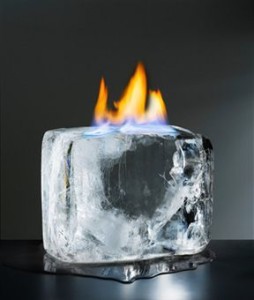
Source: www.buzzle.com
A patient of mine went to China for a tour and due to walking for days on end; he developed an inflammation in both his ankles from the excessive use of the joint and inadequate rest in between.This could have been a minor problem to him IF he had not chosen to dip his inflamed ankles in a tub of hot water as prescribed by a Chinese physician he visited in China. This is one of the many stories I hear on a daily basis in my practice as a physiotherapist which brings a question to mind? When do we actually use ice or how long can an injury last till heat treatment is prescribed?
Before we get down to the specifics, lets us discuss how our own biological body deals with injury or more accurately; inflammation which can be characterized by rubor (redness), tumor (swelling), calor (heat) and dolor (pain). It is one of our body’s natural defense mechanisms to deal with injury, which is actually a good thing. Let us say you get a cut on your arm, the nerves that are responsible to send the feeling of “pain” to the brain are activated which lets the brain know an injury has occurred.
As with any open wound, bacteria will start to invade, causing infections. To prevent that for happening, the tissues around the injury will begin to swell up to create a barrier, which is then followed by increased blood flow to the damaged tissue which causes redness and increase in warmth. This process is characterized as acute injury which roughly takes two days or longer depending on the severity of the damage or type of pain felt; sharp pain. If a dull pain or soreness is felt after the acute phase ends, this is a sign that the injury did not heal properly and scar tissues has become a problem. This is termed as chronic injury.

Source: www.momsteam.com
Now that we all know how our body deals with injury; let us discuss how our body deals with changes in low and high temperature. When we heat the body, the blood vessels begin to dilate (open wider) which increases blood flow and makes soft tissue more pliable, which relaxes the body and ultimately reduces the sensation of pain. Whereas if cold treatments are applied to the body, the heat transfers from the body to the ice thus cooling the body and depending on the duration of the exposure, numbness to the iced area will be felt. Prolonged contact with ice, especially direct contact with skin may cause frostbite, which literally means tissue death.
So combine the two simple theories together, we will begin to understand the usage of heat and ice of for treatment of injuries. Always apply ice FIRST to injuries, twice a day and not more than 20 minutes per session with a thin cloth in between ice and skin for roughly a week.
Once the area of injury has lost its redness, swelling and sharp pain; and the surrounding tissues/joints feels stiffer than normal, heat therapy can be applied. Examples of heat therapies include hot baths, heat packs, heat creams and heat lamps. Maximum time of application is on average 20 to 30 minutes of application and as always a thin towel to be placed between heat source and skin to prevent burns. If used correctly, heat and ice treatments will do wonders for minor injuries and can save you a great deal of pain. Please consult your local doctor if the pain persist or worsens.
Mr. Jonathan Goh is a physiotherapist currently working in Sarawak. He is passionate about increasing public awareness on important issues such as osteoarthritis.
References

how about hot shower? is it dangerous
Hi WM Firdaud, thank you for your reply. A hot shower within the normal temperature in which we can stand will do wonders for you if you happen to have stiff muscles or joints from a long day from work. Have a long ten minutes hot shower and you will begin to feel a relief, works better if you have a bath tub where you can immerse yourself in it. The only time when a hot shower is contraindicated is when you have an open wound or inflamed tissue around the body. Hope this helps in answering your question.